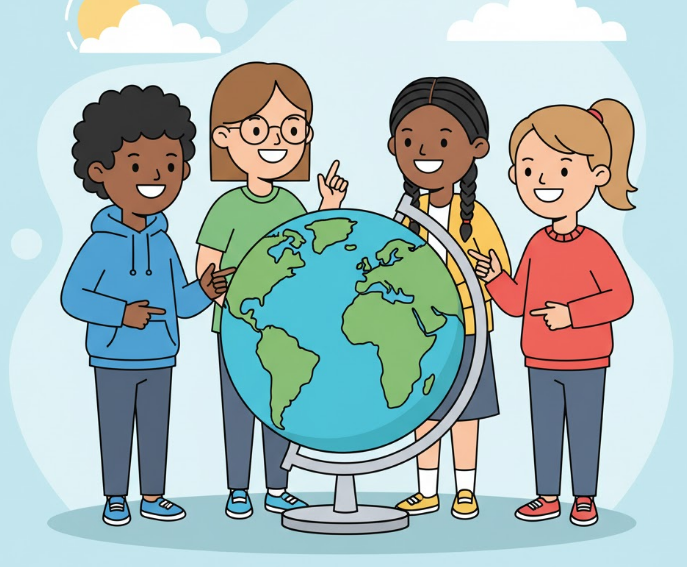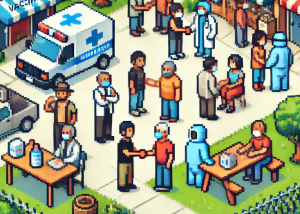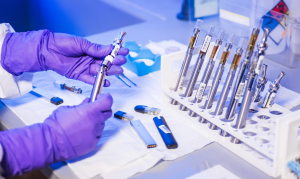
Why Experiential Learning Is Transforming Global Health Education
In a packed university conference room, students aren’t cramming for an exam—they’re negotiating a global pandemic. One represents Kenya, while the other represents the United States. A delegate from Brazil just proposed an emergency resolution. Welcome to the World Health Assembly Simulation (WHA SIM), where undergraduate students at York University assume the roles of world health leaders to practice solving real-world crises before graduation.
As public health challenges become increasingly complex—from pandemics to climate-driven health inequities—educators are seeking ways to prepare students beyond traditional lectures and PowerPoints. A recent study published in PLOS Global Public Health explores how immersive, simulation-based learning can bridge that gap.
Why Simulations Matter
Traditional teaching methods, the study notes, often fail to support diverse learning styles or translate theory into practice. Simulation-based experiential learning, by contrast, lets students experience the pressure, collaboration, and creativity required to address health emergencies.
The WHA SIM mimics the decision-making process of the World Health Organization’s annual assembly—the world’s highest health policy forum. Over three days, students write position papers, debate policy proposals, and vote on resolutions addressing global health security. The 2023 theme, “Building Global Solidarity for Worldwide Health Security,” pushed participants to think critically about how to respond to pandemics and build equitable systems of care.
“Interacting with various fields and applying knowledge in real-world contexts made me realize how much I’ve learned,” one participant reflected. “It gave me confidence that I could actually do this work.”
What the Research Found
The mixed-methods study, led by Ahmad Firas Khalid and colleagues at York University, surveyed 39 students and interviewed 18 more. Here’s what stood out:
Confidence Boost:
Students reported significant growth in communication (92%), problem-solving (87%), and leadership (79%) confidence. They also felt better prepared for professional practice—though only two-thirds said they were fully ready for real-world work.
Career Readiness:
Nearly three-quarters of students said the simulation was “very helpful” in understanding the workplace and tackling complex health challenges. The hands-on experience helped them visualize future careers at organizations like WHO or in national ministries of health.
Interpersonal Growth:
Participants highlighted gains in teamwork, negotiation, and feedback. One student said, “It’s about expressing ideas clearly without hurting anyone’s feelings and ensuring the final product is something we’re all proud of.”
Realism and Relevance:
The simulation’s fidelity to real WHA procedures—drafting resolutions, managing disagreements, and voting—made learning memorable. Several students described the event as “transformational,” moving them from passive learners to active problem-solvers.
Key Insight
“The absence of a rubric allowed for creative, collaborative solutions, free from strict guidelines.”
—Study participant
This flexibility, according to the authors, helps students engage more deeply and think innovatively—essential skills for future global health leaders.
What This Means in Practice
For public health educators and institutions, the findings offer actionable takeaways:
- Integrate simulations early: Introduce real-world role-play into undergraduate curricula to help students apply theory sooner.
- Focus on confidence, not just content: Simulations build professional self-efficacy—a key predictor of future leadership.
- Encourage interdisciplinary teams: Students from health sciences, policy, and social sciences bring complementary perspectives to global health challenges.
- Measure outcomes beyond grades: Collect reflective feedback to capture how students grow in communication, teamwork, and problem-solving.
Simulation-based learning, the authors argue, doesn’t replace traditional education—it enhances it, turning abstract policy debates into lived experience.
Barriers and Future Directions
Despite its promise, the study notes limitations. Self-reported data may overstate perceived gains, and more objective evaluations—such as pre/post testing or performance assessments—are needed. Funding and faculty training also remain challenges for scaling simulations across campuses.
Still, the implications are clear: as global health threats multiply, academic programs must train students not only to know the science but to navigate the systems that shape health outcomes.
Future research will examine whether these simulated experiences translate into real-world leadership, advocacy, and innovation in students’ careers.
The Bigger Picture
When WHO Director-General Dr. Tedros Adhanom Ghebreyesus praised the WHA SIM for “advancing global health learning,” he underscored what many educators are now realizing: preparing tomorrow’s public health leaders means giving them the space to practice today.
As one student summed it up: “That simulation helped me see what kind of leader I want to be.”
Discussion Starters
- How might your school or organization adapt simulation-based learning for local or regional health challenges?
- What skills—beyond technical knowledge—do future public health professionals need most?
- How can simulations like WHA SIM complement existing training programs to close the confidence gap between the classroom and the field?



